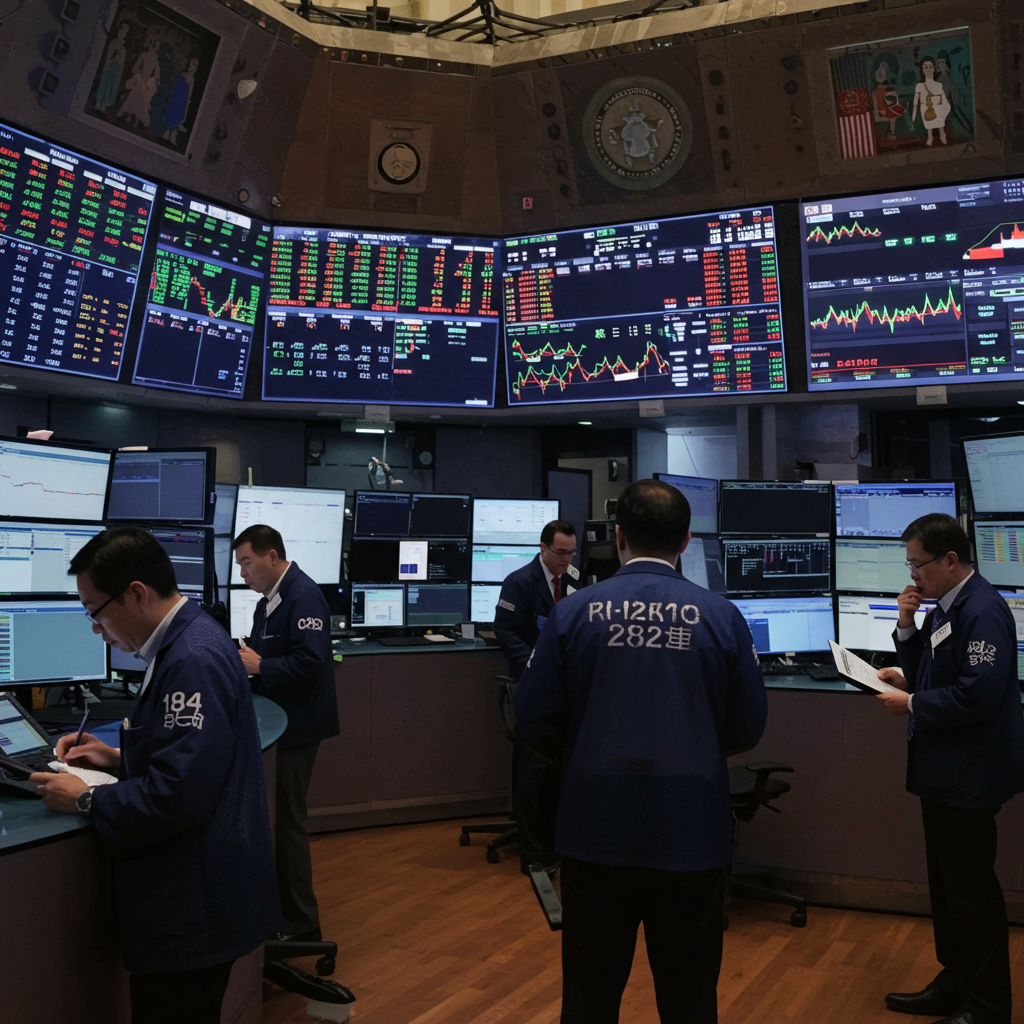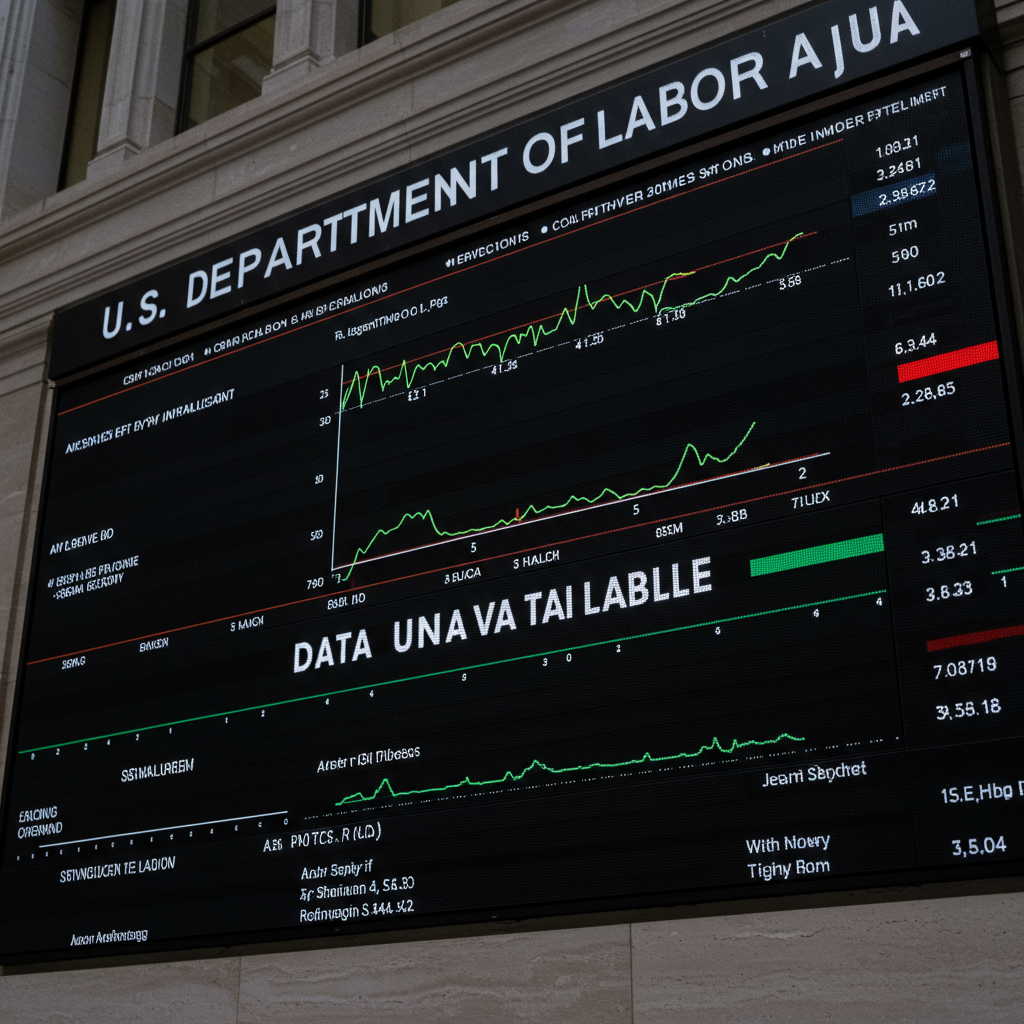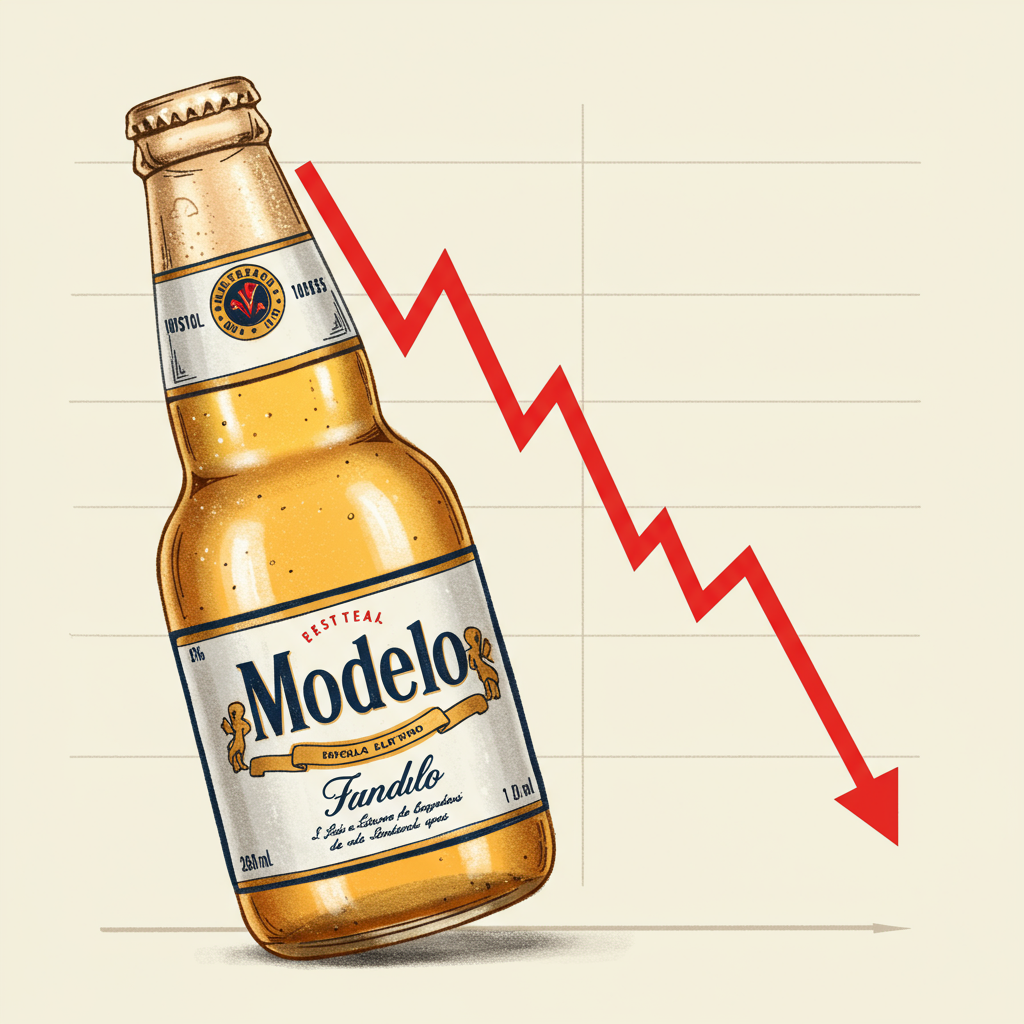Asia-Pacific financial markets closed out the trading week on a cautious or downward note Friday, with investors grappling with significant uncertainty surrounding upcoming U.S. <a href="https://news.quantosei.com/2025/07/04/us-stocks-rise-as-investors-prepare-for-trumps-tariff-deadline/” title=”Breaking: US Stocks Rise as Trump Tariff Deadline Looms”>trade policies. The primary driver behind the subdued sentiment was the looming deadline set by U.S. President Donald Trump for potential increases in import tariffs. This hesitation across Asia stood in stark contrast to the robust performance seen on Wall Street overnight, where a strong U.S. jobs report had pushed major indices like the S&P 500 and Nasdaq Composite to fresh record highs. However, that optimism failed to carry over into the Asian trading session, underscoring the region’s sensitivity to trade tensions with the United States.
The impending deadline for potential tariff hikes, initially signaled for July 9th but with formal implementation potentially starting August 1st via unilateral letters, created a wait-and-see atmosphere. Treasury Secretary Scott Bessent had previously indicated that around 100 countries could face a minimum 10% “reciprocal” tariff rate, prompting a rush for last-minute deals. President Trump later announced a shift, stating the U.S. would send “take it or leave it” letters outlining specific duties, bypassing the need for deals with all partners by the earlier date. This strategic pivot kept markets on edge, as the specific rates and targeted countries remained a critical unknown.
Regional market Performance Snapshot
Across the diverse Asia-Pacific landscape, market performance on Friday reflected this mix of caution and local factors:
Japan: Both the benchmark Nikkei 225 and the broader Topix index ended the day largely unchanged, finishing flat at 39,810.88 and 2,827.95 respectively. This resilience came despite the broader regional downturn, supported by strong domestic economic data.
South Korea: The Kospi index experienced a notable decline, dropping 1.99% to close at 3,054.28. The small-cap Kosdaq index also fell significantly by 2.21% to 775.80, making South Korea one of the region’s weaker performers on the day.
Mainland China: Bucking the negative trend seen elsewhere, Mainland China’s CSI 300 index edged up by 0.36%, closing at 3,982.20.
Hong Kong: The Hang Seng Index in Hong Kong fell by 0.64%, ending the trading session at 23,916.06.
Australia: The S&P/ASX 200 index in Australia remained flat, closing at 8,603.
India: India’s key benchmarks, the Nifty 50 and BSE Sensex, were slightly lower. By midday Indian Standard Time, the Nifty 50 had slipped 0.17%, and the BSE Sensex was down 0.18%.
This varied performance highlights how individual market dynamics and specific country-level news influenced investor sentiment alongside the overarching concern about U.S. trade policy.
Country-Specific Trade Dynamics and Local Factors
Beyond the broad market indices, several specific country developments drew investor attention and contributed to the day’s trading patterns. Nations across the region were actively navigating potential tariff impacts and pursuing bilateral trade arrangements with the U.S.
Indonesia Pursues Deal Amidst Economic Headwinds
Indonesian stocks continued their downward trend for the fourth consecutive day, with the Jakarta Composite Index falling as much as 0.42%. This market weakness coincides with challenging domestic economic conditions. Indonesia’s central bank has hinted at further interest rate cuts, following two reductions earlier in the year, in response to the economy’s slowest growth rate in over three years during the first quarter. Amidst this backdrop, Indonesia is reportedly finalizing a substantial $34 billion trade pact with U.S. partners. This deal, expected to be signed just before the July 9th tariff deadline, involves Indonesia increasing imports of U.S. goods, particularly fuels, and Indonesian companies investing in U.S. energy and agriculture sectors. This move is seen as a strategic effort to secure a favorable trade agreement and avoid potential higher tariffs from Washington. Indonesia currently faces a potential 32% tariff on certain exports to the U.S. State-owned airline Garuda Indonesia is also reportedly in talks to purchase up to 75 Boeing jets, another potential area of increased U.S. imports.
Taiwan’s Divergent Market Signals
Taiwan presented a complex picture. The Taiwanese dollar appreciated against the U.S. dollar, strengthening by 0.25% by midday local time and hitting its highest level since April 2022. This currency movement suggested investors were assessing the potential impact of tariffs on exports and perhaps anticipating capital flows. However, the benchmark Taiex index moved in the opposite direction, last seen trading down 0.67%. This decline was particularly pronounced in the energy, industrials, and healthcare sectors. Major technology stocks, including industry giant Taiwan Semiconductor Manufacturing Co (TSMC) and Hon Hai Precision Industry (Foxconn), also traded lower, indicating broader concerns despite the currency strength.
Vietnam’s Currency Weakness and Trade Deal Nuances
The Vietnamese dong continued its depreciation against the U.S. dollar, hitting a record low on Friday before weakening slightly to 26,200 per dollar by late morning. This currency pressure occurred despite the recent announcement by President Trump of a trade deal with Vietnam. Under the reported terms of this agreement, Vietnamese imports would face a standard 20% tariff in the U.S., significantly lower than initial threats. Notably, goods deemed to be transshipped from other countries (like China) through Vietnam to evade tariffs would face a higher 40% duty. While the deal was announced, Vietnamese negotiators indicated that details were still being finalized, and businesses were awaiting clarity. Vietnamese stocks also fell for a second consecutive day, suggesting the positive impact of the trade deal announcement was either limited or overshadowed by currency concerns and broader market sentiment. Vietnam has rapidly grown as a U.S. trade partner, benefiting from companies seeking to diversify supply chains away from China.
India’s Regulatory Action and Ongoing Talks
Indian markets opened flat as investors weighed the possibility of a trade deal with the U.S., where talks were reportedly close to an agreement but still facing hurdles regarding U.S. dairy and agriculture market access. Adding another layer of complexity, the Securities Exchange Board of India (SEBI) issued an order barring U.S.-headquartered trading firm Jane Street Group from accessing the Indian securities market. The regulatory action, citing alleged market manipulation, included an interim order to impound over 48.4 billion Indian rupees ($566.3 million) in purported illegal gains from the firm. This significant regulatory event likely influenced market sentiment within India on Friday.
Alibaba’s Strategic Fundraising
In corporate news impacting the region, Chinese tech behemoth Alibaba Group announced plans to raise approximately HK$12 billion ($1.53 billion) through exchangeable bonds. The fundraising is intended to fuel the company’s aggressive global expansion plans for its cloud computing infrastructure and e-commerce businesses. The zero-interest bonds can be exchanged later for shares in Alibaba Health, a key subsidiary. This move follows a prior $5 billion bond offering and comes as Alibaba Cloud recently unveiled new data centers in the Philippines and Malaysia, and its commerce arm reportedly committed to a 50 billion yuan ($6.4 billion) subsidy program.
Japan’s Strong Household Spending
While Japan’s markets ended flat, new government data provided a positive domestic signal. Average household spending surged by 4.7% year-on-year in real terms in May, significantly exceeding economists’ median forecast of 1.2%. This marked the strongest annual increase since August 2022 and reached 316,085 yen ($2,183.49) for the month. Average monthly household income also saw a slight rise of 0.4% year-on-year. This data is crucial for the Bank of Japan as it considers future monetary policy decisions, including potential interest rate adjustments, and indicates strengthening domestic demand.
The U.S. market was closed on Friday for the Independence Day public holiday, leaving Asian markets to react primarily to the ongoing trade policy uncertainty and domestic news without fresh direction from Wall Street. The focus for the coming days will remain squarely on developments out of Washington as the effective deadline for the new tariff structure approaches and countries like Indonesia and India push to finalize deals.
Frequently Asked Questions
What was the main reason for the mixed performance in Asia-Pacific markets on Friday?
The primary factor influencing Asia-Pacific markets on Friday was the significant uncertainty surrounding U.S. trade policy, specifically the looming deadline for potential increases in import tariffs by President Donald Trump. While some markets like South Korea and Hong Kong saw declines driven by this anxiety, others like Japan and Australia ended flat, and China’s CSI 300 even posted a gain. This mixed performance reflects a combination of the overarching tariff concern alongside specific country-level economic data, corporate news, and regulatory actions.
Which Asia-Pacific countries saw significant market drops or currency movements, and why?
South Korea experienced one of the largest drops, with both the Kospi and Kosdaq indices falling sharply (around 2%). Indonesia’s stocks also declined for the fourth straight day, influenced by slower economic growth and anticipation around a large trade pact aimed at avoiding U.S. tariffs. Vietnam’s dong hit a record low against the dollar, and its stocks fell despite a recently announced U.S. trade deal. Taiwan’s Taiex index fell, dragged down by specific sectors and tech stocks, even as the Taiwanese dollar appreciated as investors assessed tariff impacts.
How might President Trump’s tariff strategy impact future trade deals in Asia?
President Trump’s approach, including the shift to sending unilateral “take it or leave it” letters detailing specific tariff rates effective August 1st, signals a move away from broad, negotiated agreements with every partner by a single deadline. This could put pressure on countries to quickly finalize bilateral deals, as seen with Indonesia’s $34 billion pact effort. The explicit focus on combating “transshipment” and “origin washing,” particularly evident in the Vietnam deal’s two-tiered tariff structure, also indicates the U.S. will actively target countries perceived as facilitating the evasion of tariffs on goods primarily sourced elsewhere, notably China.
The overall sentiment across Asia-Pacific markets on Friday underscored the deep interconnections between global trade policy and regional economic stability. As the effective date for potential new U.S. tariffs approaches, investors and policymakers will be closely monitoring developments, particularly the outcome of ongoing negotiations and the specific details of the tariff letters sent by the U.S. administration. The coming weeks are expected to bring further clarity on the future of trade relations between the U.S. and its Asian partners.




